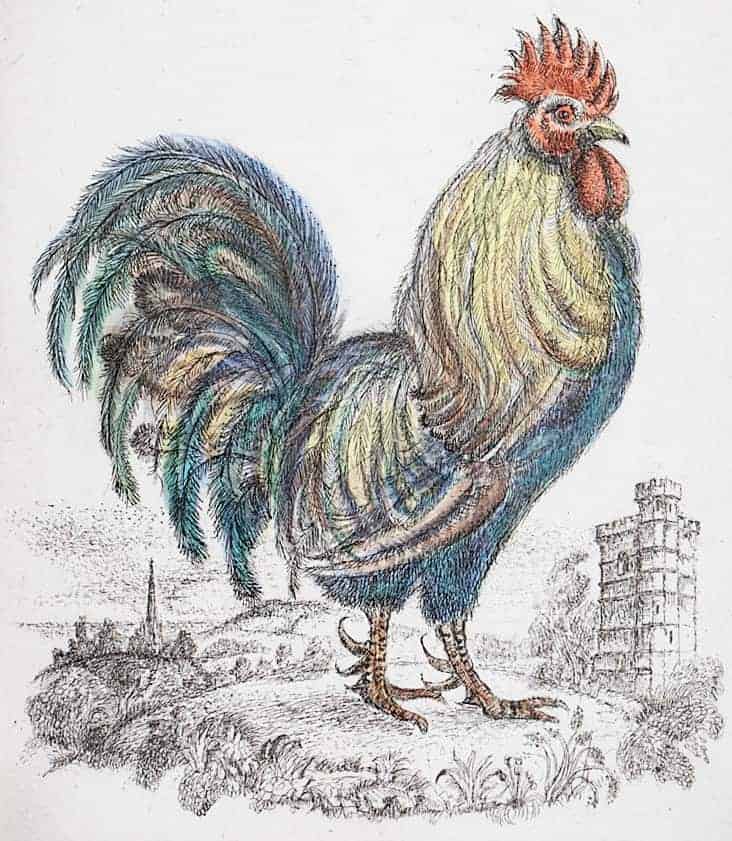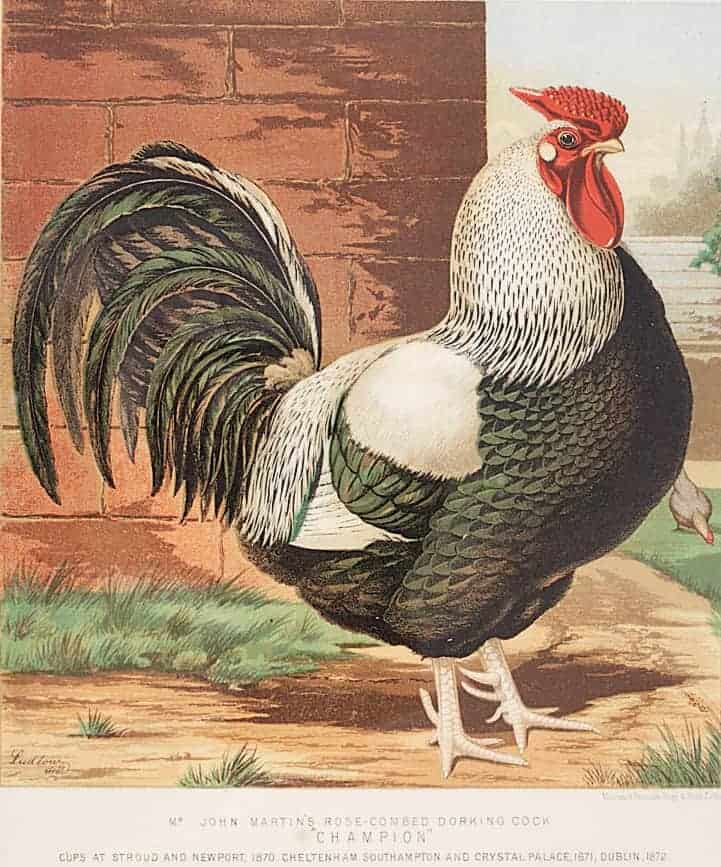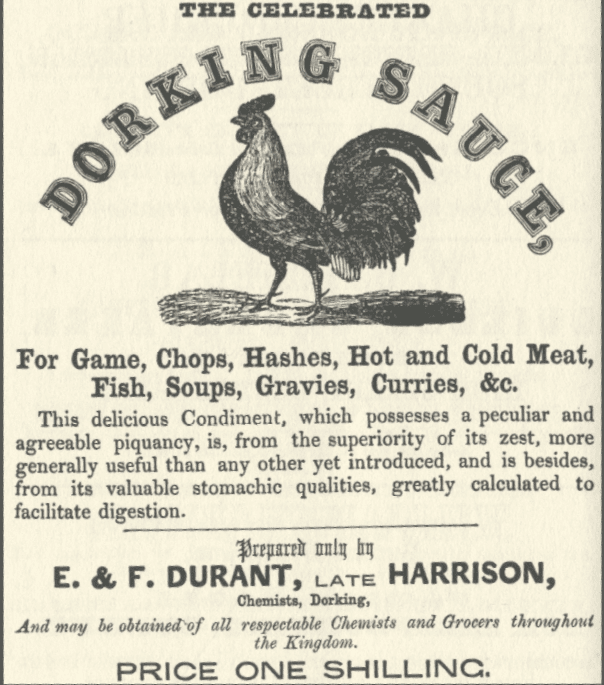
Dorking: The ‘greatest market for poultry in England’
So claimed John Aubrey in his Natural History and Antiquities of the County of Surrey, begun [published] in 1673. Local farmers’ wives bred the large eating birds with their distinctive fifth toe. They were ‘crammed’ by ‘fatters’ and brought to the Thursday market in crates, then transported to London by ‘higglers’. The eggs were popular too: in 1900 it was reported that something was amiss with Queen Victoria when even the white Dorking eggs served for her breakfast could not make her comfortable.

The Dorking breed topped its class in the Zoological Society’s first poultry show in 1845. Breeders refined the Dorking’s colour and physique for competition. The original Grey Dorkings were speckled white, grey and black, with white legs and black tails. White Dorkings were pure white and Edward Lear included a lady ‘talking to some milk-white hens of Dorking’ in his poem ‘The Courtship of the Yonghy Bonghy Bo.´ Coloured Dorkings had a salmon breast, brown wing feathers and a black back; the Silver Grey cock had a silvery-white neck, back and wings with a black tail and breast; the hen was silver-grey with a salmon breast. The Cuckoo Dorking was light grey with blue-grey pencilling.

Image : Dorking Museum
The ‘five-claw’d un’ has declined in popularity for eating but remains a popular specialist breed. In 1880 Dorking football club became known as the Chicks. In 1894 the bird appeared on the town seal, and in 1951 the Chamber of Commerce erected cockerel signs on the approaches to the town. Numerous local clubs and societies have adopted the bird as their emblem.
Last : Leith Hill Music Festival
Next : Dorking’s Caves

